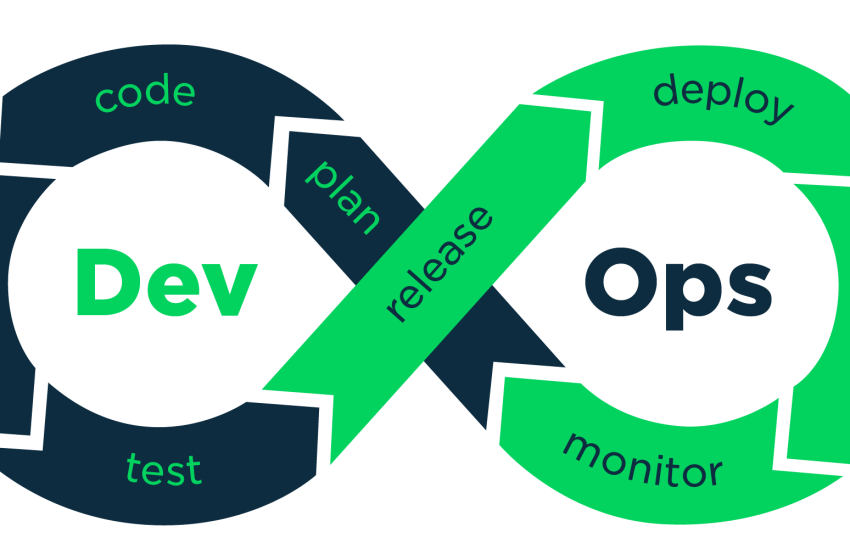DevOps Enablement for Traditional Businesses: Embracing Change for Success

In the ever-evolving landscape of technology, traditional businesses face immense pressure to adapt and innovate. Adopting DevOps practices has emerged as a critical strategy for organizations aiming to streamline operations, enhance collaboration, and accelerate development processes. This article explores how traditional businesses can embrace DevOps enablement to drive success and stay competitive in a digital-first world.
Understanding DevOps Enablement
DevOps enablement is the process of integrating development (Dev) and operations (Ops) teams to improve collaboration and productivity, streamline workflows, and enhance the delivery of software and services. By fostering a culture of continuous integration, continuous delivery, and automation, DevOps enables organizations to respond more rapidly to market changes and customer needs.
The Challenges Traditional Businesses Face
Traditional businesses often operate within rigid, hierarchical structures that can hinder agility and innovation. Common challenges include:
1. Siloed Teams
Departments within traditional organizations often work in isolation, leading to communication barriers and inefficiencies. Development and operations teams, in particular, may have conflicting goals and priorities.
2. Legacy Systems
Many traditional businesses rely on outdated legacy systems that are difficult to integrate with modern technologies. These systems can slow down development processes and impede the adoption of new practices.
3. Resistance to Change
Cultural resistance to change is a significant barrier. Employees accustomed to established processes may be reluctant to adopt new methodologies and tools.
4. Security Concerns
Traditional businesses may have stringent security and compliance requirements that complicate the implementation of new technologies and practices.
The Benefits of DevOps Enablement
Despite these challenges, the benefits of DevOps enablement for traditional businesses are substantial:
1. Improved Collaboration
DevOps fosters a culture of collaboration between development, operations, and other stakeholders. By breaking down silos, teams can work together more effectively, share knowledge, and solve problems faster.
2. Faster Time to Market
Continuous integration and continuous delivery (CI/CD) practices enable faster and more frequent releases. This agility allows businesses to respond quickly to market demands and deliver value to customers more rapidly.
3. Enhanced Quality and Reliability
Automation and continuous testing reduce the risk of human error and ensure that code changes are thoroughly tested before deployment. This results in higher-quality software and more reliable services.
4. Increased Efficiency
Automation of repetitive tasks frees up valuable time for development and operations teams, allowing them to focus on more strategic initiatives. This leads to increased productivity and operational efficiency.
5. Greater Customer Satisfaction
By delivering updates and new features more quickly and reliably, businesses can enhance the customer experience and build stronger relationships with their clientele.
Steps to Achieve DevOps Enablement in Traditional Businesses
Transitioning to a DevOps culture requires careful planning and execution. Here are key steps to achieve successful DevOps enablement:
1. Assess Current Processes and Identify Gaps
Begin by evaluating your current development and operations processes. Identify pain points, inefficiencies, and areas where collaboration can be improved. This assessment will help you understand the specific challenges your organization faces and guide your DevOps strategy.
2. Foster a Culture of Collaboration and Continuous Improvement
Cultural change is at the heart of DevOps enablement. Encourage open communication and collaboration between teams. Promote a mindset of continuous improvement, where employees are empowered to identify issues and suggest solutions.
3. Implement Automation
Automation is a cornerstone of DevOps. Automate repetitive tasks such as code integration, testing, and deployment to reduce manual effort and minimize errors. Tools like Jenkins, GitLab CI, and CircleCI can facilitate CI/CD processes.
4. Adopt Continuous Integration and Continuous Delivery (CI/CD)
CI/CD practices enable rapid and reliable software delivery. Implement CI/CD pipelines to automate the building, testing, and deployment of code. This ensures that changes are continuously integrated and tested, leading to faster and more stable releases.
5. Modernize Legacy Systems
Integrating DevOps practices with legacy systems can be challenging but essential. Consider phased modernization, where critical components are updated incrementally. Containerization and microservices architecture can help make legacy systems more flexible and easier to manage.
6. Prioritize Security
Security should be integrated into every stage of the DevOps lifecycle, a practice known as DevSecOps. Implement security checks and compliance audits as part of your CI/CD pipelines. Tools like SonarQube and Snyk can help identify and address security vulnerabilities early in development.
7. Invest in Training and Development
Provide training and resources to help your teams understand and adopt DevOps practices. Encourage continuous learning and skill development to keep up with evolving technologies and best practices.
8. Measure and Monitor Performance
Establish key performance indicators (KPIs) to measure the success of your DevOps initiatives. Monitor metrics such as deployment frequency, lead time for changes, and mean time to recovery (MTTR) to track progress and identify areas for improvement.
Case Study: A Traditional Business Embracing DevOps Enablement
Let’s consider a hypothetical case study of a traditional financial services company that successfully embraced DevOps enablement.
Company Background
The company, a mid-sized financial institution, faced challenges with slow software release cycles, frequent production issues, and siloed teams. Recognizing the need for change, they embarked on a DevOps transformation journey.
DevOps Implementation
-
Assessment and Planning: The company conducted a thorough assessment of its current processes and identified key areas for improvement. They developed a roadmap for DevOps adoption, focusing on automation, CI/CD, and cultural change.
-
Automation: Repetitive tasks, such as code integration and testing, were automated using Jenkins. This significantly reduced manual effort and minimized errors.
-
CI/CD Adoption: The company implemented CI/CD pipelines to automate the build, test, and deployment processes. This enabled faster and more reliable software releases.
-
Cultural Change: Cross-functional teams were formed to foster collaboration between development, operations, and security. Regular meetings and open communication channels were established to encourage knowledge-sharing and continuous improvement.
-
Legacy System Modernization: Critical components of the company’s legacy systems were containerized using Docker. This made the systems more flexible and easier to integrate with modern technologies.
-
Security Integration: Security checks were integrated into the CI/CD pipelines using tools like SonarQube. This ensured that security vulnerabilities were identified and addressed early in development.
Results
The DevOps enablement efforts yielded impressive results:
- Faster Releases: The company’s release cycles were reduced from months to weeks, allowing it to respond quickly to market demands.
- Improved Quality: The number of production issues decreased by 40%, thanks to automated testing and continuous integration.
- Enhanced Collaboration: Teams reported higher satisfaction and improved collaboration, leading to increased productivity and innovation.
- Greater Customer Satisfaction: Faster and more reliable releases resulted in improved customer satisfaction and loyalty.
Conclusion
DevOps enablement is a powerful strategy for traditional businesses looking to stay competitive in a rapidly changing digital landscape. By fostering collaboration, automating processes, and embracing continuous improvement, organizations can achieve faster time to market, enhanced quality, and greater customer satisfaction.

